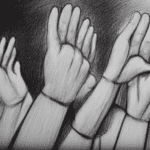There is a great debate that rages about this question. This one was first sparked by Niccolo Machiavelli, who was imprisoned in 1512. He wrote “The Prince” to outline the ways a prince should rule a principality and hold onto his power. His arguments still spark debates today.
Machiavelli’s argument
Whether a state should be ruled by love or fear, the key to successful governance lies in the appropriate design of its leadership. Historically, states have employed both forms of leadership, but in different proportions. The United States, for example, uses the feared form of leadership when dealing with other nations. This kind of leadership is based on military prowess and resources, but also focuses on good relationships.
While Machiavelli is not advocating cruelty for the sake of cruelty, he does argue that a ruler should be feared. In addition, he points out that a ruler should be harsh with his subjects to enforce discipline and make the army stronger. For this reason, he concludes that fear is a better motivator than love.
Some scholars have argued that Machiavelli is best understood as a political philosopher and is associated with political pragmatism. However, there is some disagreement over whether his arguments are original or coherent. Many scholars argue that his writings were motivated by local agendas and were not grounded in a sound philosophical foundation.
Fear, on the other hand, is more effective in keeping people in line. Its effectiveness is rooted in the fact that it can prevent people from doing what they would otherwise do. Moreover, people who are afraid of punishment are less likely to plot against their fellow citizens.
While fear has its benefits, it is not the best way to govern. Its consequences are often disastrous for society. If a society prioritizes security over freedom, its population will disarm and become passive. In the long run, it will lead to irreparable ruin.
Similarly, fear and love have contrasting effects on the behavior of citizens. Love may lead to action, but fear can cause resistance or even overt disobedience. And if a society is ruled by fear, its leaders will be more likely to be hated.
Machiavelli’s argument for love versus fear is based on the premise that the end justifies the means. In other words, if a leader is able to manipulate the people into doing something evil, it is more likely to succeed than to fail. The goal of statecraft, as it is described in the text, is to avoid disorder, which is not good for the citizens.
Hayne’s argument
Hayne, a senator from South Carolina and surrogate for vice president John C. Calhoun, was an advocate of ending land sales. He believed that land sales were a waste of money and drained the Western states of wealth. He also argued that states should have the right to control their lands and nullify federal laws. Hayne also claimed that the North was trying to destroy the South by imposing high tariffs.
The debate became a legend, but its contemporary reception was quite different. Some saw it as a triumph for Webster, while others saw it as vindication for the Constitution. Ultimately, national opinion was split, but there was probably a majority of Americans who agreed with Hayne’s doctrines. The questions raised during the debate would divide people and reverberate through the country for the next thirty years.
Hayne was an accomplished writer, speaker, and lawyer. He was well-educated and exhibited a charming demeanor. He was a staunch advocate of the Southern aristocratic class, but he also attacked Northeast protectionism of nascent industries. His argument also linked the obstructive actions of the industrialists in the Northeast to the destruction of Western migration.
While Webster and Hayne did not agree on the Constitution’s rights, they did agree on a number of things. Noah Webster, for one, believed that the country was a nation made by the people, and that it had the right to protect its people by establishing a strong national government. He believed that a centralized government would build the American economy and keep the union together.
While the Webster-Hayne Debate was not the first debate about American nationhood, it is still an important historical debate. The modern United States leans toward Webster’s vision of a federal Union, but we continue to argue over states’ rights, nationalism, and sovereignty. The Webster-Hayne Debate exemplifies this, and illustrates the messy nature of nationhood.
Culture of fear
The Culture of Fear is a concept that describes the way that people incite fear among the public. It was first developed as a sociological framework by the American sociologist Frank Furedi, and then popularized by the American sociologist Barry Glassner. It’s a powerful tool that can be used to influence the public in many ways.
In its most basic form, the concept of a Culture of Fear involves the widespread use of fear in public discourse. These fears are used to motivate people. These fearful messages are not only spread by the media, but by influential organizations and individuals as well. The authors of the Culture of Fear have argued that this type of communication is a problem for democracy and human relationships.
The use of fear has historically been a powerful tool for controlling societies, and it is particularly effective when a crisis is imminent. In order to highlight these fears, the Beckett Room and UOC recently organised a Terrors of the City cycle. The programme explored the deep roots of contemporary fears and the uncertainty of our future. One of the best indicators of the Culture of Fear is cinema, which is dominated by apocalyptic films.
Glassner also highlights the importance of understanding the origin of the fear-filled stories. Glassner provides a lot of background information about how the media influences human behavior and thinking. While he holds Trump partially responsible for the rise of fears in American society, the history of fear-mongering precedes the rise of the current president.
As a leader, it’s important to recognize and challenge the culture of fear. By being proactive, you can prevent the culture of fear from becoming a pervasive problem in your organization. Developing an environment of trust among your staff will encourage them to share ideas and take initiative. A Culture of Fear is a culture that causes people to leave or look elsewhere. It also damages the image of your company as an employer.
Today, a similar Culture of Fear is prevalent in Guatemala. Though terrorism and terrorist attacks are rare, the media’s messages about the dangers of violence and terrorism have a profound effect on public opinion. By labeling Guatemala as a “savage beast,” the government has been able to justify exploitation and repression. It also serves the interests of foreign investors and domestic privilege.











